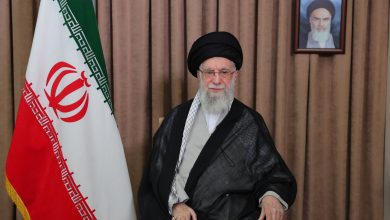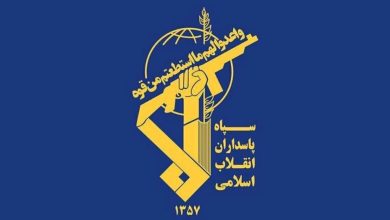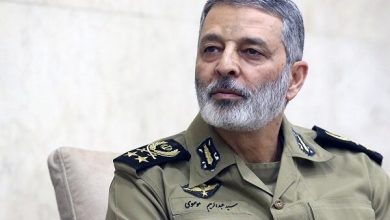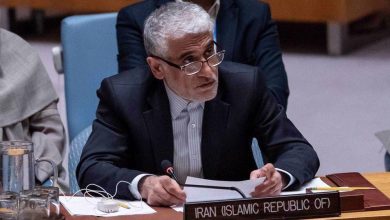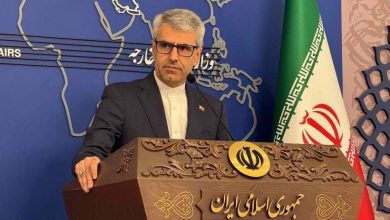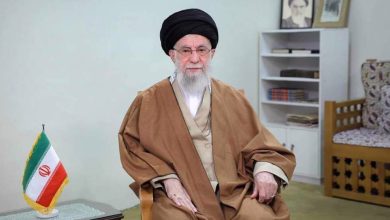“Great Prophet 19: Iran showcases military prowess as regional tensions escalate”
On Tuesday, the Aerospace Force of the Islamic Revolution Guards Corps (IRGC) successfully initiated the deployment of the 358 defense missile system for the first time. This activation occurred within the air defense zone surrounding the Natanz nuclear facility, located in the central Iranian province of Isfahan.
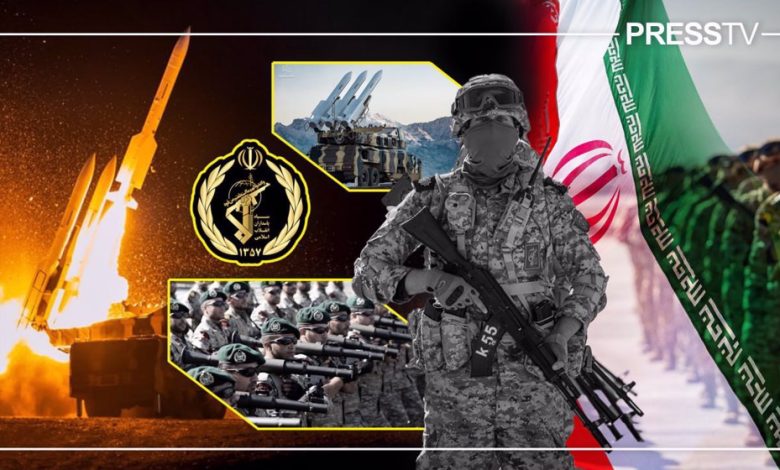
On Tuesday, the Aerospace Division of Iran’s Islamic Revolution Guards Corps (IRGC) successfully deployed the 358 defense missile system for the first time. This strategic operation took place within the air defense perimeter of the Natanz nuclear facility, located in Isfahan province, central Iran.
Addressing the event, Major General Hossein Salami, the commander of the Islamic Revolutionary Guard Corps (IRGC), announced that a comprehensive military exercise had been conducted. This exercise incorporated a range of real-world scenarios aimed at safeguarding the strategically significant nuclear facility situated in Iran’s central province of Isfahan.
“We aimed to simulate potential enemy actions under real-world conditions through preplanned scenarios during the Eqtedar 1403 military exercises,” he stated.
Promising outcomes and significant achievements were successfully attained.
The extensive military exercise known as ‘Great Prophet-19′ (Payambar Aa’zam 19) commenced on January 4 and is scheduled to conclude on Thursday, January 9.
In a strategic training exercise, rapid response operation scenarios have played a pivotal role, engaging specialized units of the Islamic Revolutionary Guard Corps (IRGC) Ground Forces in the country’s western region.
The 358 defense missile system, a distinctive loitering surface-to-air weapon, has been tested for the first time amid the ongoing extensive military exercises. This missile is among the advanced weaponry being evaluated in the drills.
The inaugural phase of the military exercise showcased the enhanced proficiency of the IRGC Ground Forces in rapidly deploying personnel and equipment to strategic locations. The IRGC is currently evaluating new military technology during an extensive exercise named Great Prophet-19, taking place in Iran’s western Kermanshah province. This operation is designed to bolster national defense capabilities and improve combat preparedness.
The primary aims of this exercise encompass honing swift response capabilities, conducting offensive maneuvers, efficiently deploying troops, and training under demanding geographical conditions.
In a recent military exercise, the IRGC Airborne Forces have showcased their capability to deliver aerial support and facilitate troop transport to operational zones amid combat scenarios.
The drills underscored the stance that any act of threat or aggression targeting the sovereignty of the Islamic Republic of Iran will be confronted with a firm and decisive reaction from the nation’s armed forces.
Military analysts assert that these exercises represent a significant milestone in the nation’s defense initiatives, aimed at enhancing readiness and assessing operational capabilities amid possible threats. The drills incorporate contemporary tactics and strategies to bolster the military’s effectiveness.
The Great Prophet-19 exercise, encompassing aerospace, air defense, naval, and ground units, is designed to ensure the operational readiness of the armed forces through the deployment of modern equipment and weaponry. Additionally, it incorporates the participation of Basij forces in the Kermanshah province.
Amid escalating tensions, Iran’s Islamic Revolutionary Guard Corps (IRGC) has conducted extensive and specialized military exercises in the western province of Kermanshah. The operation, titled Payambar-e-A’azam (Great Prophet) 19, involved numerous specialized divisions and units of the IRGC Ground Force. The drills were designed to enhance the operational readiness and defensive capabilities of forces stationed in strategically sensitive border areas.
“Decisive Strikes in Crucial Moments”
In an interview with the Press TV website, General Mohammad Hadi Sefidchian, spokesperson for the IRGC’s military exercises, emphasized that a significant portion of the IRGC’s technical and tactical maneuvers remain undisclosed to the public. He described these as “strategic moves reserved for pivotal moments.”
The military spokesperson detailed the objectives of the Great Prophet-19 exercise.
“Our drill is being executed in multiple stages,” he detailed in a statement to the Press TV website. “Initially, the focus is on security, followed by an integration of security and defense components in the subsequent phase, culminating in a final stage that may exclusively concentrate on defensive maneuvers.”
He further elaborated that following a thorough assessment, examination, and identification of various potential threats, the Islamic Revolutionary Guard Corps (IRGC) undertakes the design, planning, and execution of these exercises.
He underscored the intent of the exercise, asserting that it serves to demonstrate to adversaries that the IRGC Ground Forces, equipped with varied combat and support units, are fully capable of delivering a rapid response against any opposition, in any geographical location required. He assured that this capability would be effectively showcased in real-world scenarios.
A senior commander of the Islamic Revolutionary Guard Corps (IRGC) emphasized that their intentions are not geared towards initiating conflict but rather towards fostering peace.
In a firm warning, the Islamic Republic has declared that any acts of injustice or attempts to infringe upon its territory will be met with severe retribution. In a show of its defensive capabilities, the country’s 358 defensive missile system and loitering munitions have been successfully tested and launched, underscoring its readiness to respond to any potential threats.
He further stated that the visible capabilities of the Islamic Revolutionary Guard Corps (IRGC) represent only a fraction of its full potential, suggesting that adversaries have yet to witness the entirety of the force’s strategic strengths.
General Sefidchian declared that during challenging times and when employing advanced tactics beyond the foes’ wildest imaginations, strategic planning is paramount. He emphasized that any notion of effortlessly compromising a nation such as the Islamic Republic should remain an unrealistic aspiration for adversaries.
He stated that the exercises are held on an annual basis in accordance with their established schedule.
A senior official from the IRGC has confirmed that the Ground Forces conduct annual exercises aligned with combat readiness standards and directives issued by the General Staff of the Armed Forces. The official added that the structure and focus of these exercises are adapted regularly to address evolving threats.
He emphasized the strategic importance of holding the exercise in the country’s western region, noting that the area has a history of terrorist activity. This backdrop underscores the critical security considerations for conducting such a drill, particularly with the high-stakes deployment of the Sevom Khordad (3rd Khordad) defense system.
State-of-the-art weaponry and equipment
A prominent aspect of this military exercise is the deployment of cutting-edge weaponry and equipment, notably the advanced 358 defense system. This system seamlessly incorporates air defense capabilities alongside drone technology, marking a significant innovation in military operations.
The 358 defense missile, a surface-launched projectile akin to an air-to-air missile, is characterized by its nine-foot length and distinctive fins situated along its body and tail. Equipped with a 22-pound explosive warhead, this missile is designed to achieve altitudes of up to 28,000 feet.
The missile has been specifically engineered to intercept and neutralize drones and aircraft operating at low altitudes.
One notable benefit of this system is its ability to operate independently and autonomously, sustaining combat effectiveness even in challenging conditions without the need for an extensive network of defense personnel.
The military exercise featured the deployment of the Ra’ad, Sevom Khordad (3rd Khordad), and Dezful defense systems.
In 2014, Iran introduced its road-mobile medium-range air defense missile system known as the 3rd Khordad. This system, characterized by its short-range capabilities, is strategically mounted on truck chassis that are prevalent in both the nation’s military and commercial fleets. Additionally, it is related to the Ra’ad system.
The system boasts a detection range extending up to 200 kilometers, with an engagement range reaching 105 kilometers. Each battery within this system is capable of launching three Taer or Sayyad-2 missiles.
A battalion of the 3rd Khordad missile defense system comprises four batteries, each equipped to simultaneously engage four targets and deploy a total of eight missiles.
In 2019, this defense system effectively intercepted and neutralized a US Navy MQ-4C Triton drone in the vicinity of the Strait of Hormuz, located in the Persian Gulf.
The Ra’ad-2 electro-optical system, integrated with the 3rd Khordad missile defense system, significantly bolsters the stability and precision of defense mechanisms amid electronic warfare scenarios.
The Dezful system, a domestically developed iteration of the Tor-M1, boasts enhancements over its Russian predecessor and is mounted on a vehicle chassis.
The Islamic Revolutionary Guard Corps (IRGC) has developed the Dezful defense system, a short-range tactical asset equipped with advanced detection and engagement capabilities. This system boasts a range of up to 12 kilometers and can effectively operate at altitudes reaching six kilometers. Integral to its design is an electro-optical thermal mechanism, specifically engineered to identify and track low-flying aerial threats.
Advancing Toward Military Autonomy
Following the Islamic Revolution, Iran experienced a substantial overhaul in its military strategy, transitioning from dependence on foreign military suppliers to establishing self-reliance in its defense capabilities.
The transition was driven by severe sanctions and arms embargoes enforced by Western nations, notably the United States, aimed at maintaining the country’s isolation.
The onset of the war imposed on Iran by the Western-supported Baathist regime in Iraq in 1980 further underscored the vulnerabilities associated with relying on external sources for military equipment.
The Islamic Revolutionary Guard Corps (IRGC) and the Ministry of Defense have spearheaded efforts in Iran to embark on reverse engineering of foreign-manufactured equipment, while significantly boosting investments in research and development initiatives.
The inception of the Defense Industries Organization (DIO) marked a pivotal development in the production of a wide range of military equipment, spanning from small arms to sophisticated missile systems.
Iran has progressed from modifying Soviet-era Scud missiles to developing advanced missile systems, such as the Shahab and Sejjil series, which are capable of striking targets throughout the region.
The program has emerged as one of the most sophisticated in West Asia, frequently regarded as a cornerstone of Iran’s deterrence strategy.
Iran has positioned itself as a leading innovator in the field of unmanned aerial vehicles (UAVs). The Shahed series, developed domestically, has garnered significant attention for its advanced operational capabilities.
These unmanned aerial vehicles have been deployed for intelligence-gathering missions, offensive operations, and electronic warfare activities.
Iran has successfully developed and produced its own naval vessels, submarines, and air defense systems, showcasing significant advancements in military technology. The domestically engineered Bavar-373 air defense system, frequently likened to Russia’s S-300, highlights Iran’s ability to construct and deploy advanced defense technology.
In the realm of naval defense, the nation has developed fast attack craft, mini-submarines, and sophisticated surface-to-surface missiles designed for maritime operations.
Innovations in Defense and Military Industries
In an interview with the Press TV website, military expert Asghar Zarei highlighted the nation’s progress in the defense sector following the triumph of the Islamic Revolution.
He noted that in the years immediately following the Islamic Revolution and the Sacred Defense, the country’s military forces were highly reliant on external support, particularly in the area of specialized training. Many officers, he observed, had to travel abroad to receive basic training.
He further emphasized that following the Islamic Revolution, particularly through the insights acquired during the Sacred Defense period, the nation has swiftly attained significant advancements across all offensive and defensive domains.

